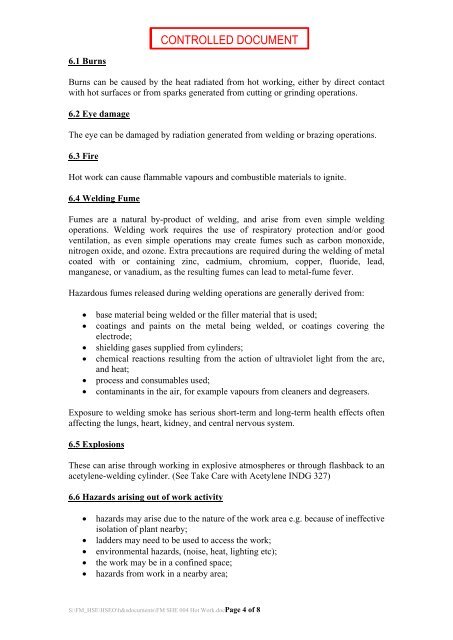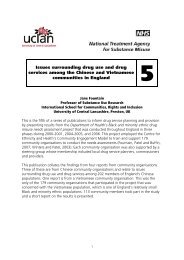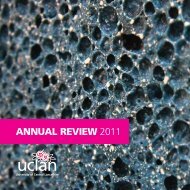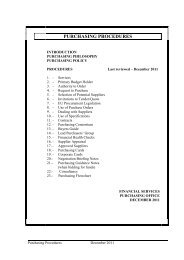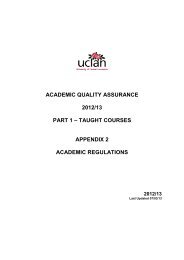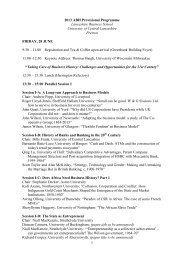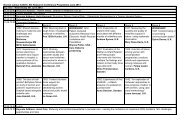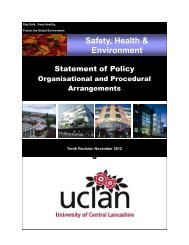Procedural Guidance for Hot Work - University of Central Lancashire
Procedural Guidance for Hot Work - University of Central Lancashire
Procedural Guidance for Hot Work - University of Central Lancashire
You also want an ePaper? Increase the reach of your titles
YUMPU automatically turns print PDFs into web optimized ePapers that Google loves.
CONTROLLED DOCUMENT<br />
6.1 Burns<br />
Burns can be caused by the heat radiated from hot working, either by direct contact<br />
with hot surfaces or from sparks generated from cutting or grinding operations.<br />
6.2 Eye damage<br />
The eye can be damaged by radiation generated from welding or brazing operations.<br />
6.3 Fire<br />
<strong>Hot</strong> work can cause flammable vapours and combustible materials to ignite.<br />
6.4 Welding Fume<br />
Fumes are a natural by-product <strong>of</strong> welding, and arise from even simple welding<br />
operations. Welding work requires the use <strong>of</strong> respiratory protection and/or good<br />
ventilation, as even simple operations may create fumes such as carbon monoxide,<br />
nitrogen oxide, and ozone. Extra precautions are required during the welding <strong>of</strong> metal<br />
coated with or containing zinc, cadmium, chromium, copper, fluoride, lead,<br />
manganese, or vanadium, as the resulting fumes can lead to metal-fume fever.<br />
Hazardous fumes released during welding operations are generally derived from:<br />
base material being welded or the filler material that is used;<br />
coatings and paints on the metal being welded, or coatings covering the<br />
electrode;<br />
shielding gases supplied from cylinders;<br />
chemical reactions resulting from the action <strong>of</strong> ultraviolet light from the arc,<br />
and heat;<br />
process and consumables used;<br />
contaminants in the air, <strong>for</strong> example vapours from cleaners and degreasers.<br />
Exposure to welding smoke has serious short-term and long-term health effects <strong>of</strong>ten<br />
affecting the lungs, heart, kidney, and central nervous system.<br />
6.5 Explosions<br />
These can arise through working in explosive atmospheres or through flashback to an<br />
acetylene-welding cylinder. (See Take Care with Acetylene INDG 327)<br />
6.6 Hazards arising out <strong>of</strong> work activity<br />
hazards may arise due to the nature <strong>of</strong> the work area e.g. because <strong>of</strong> ineffective<br />
isolation <strong>of</strong> plant nearby;<br />
ladders may need to be used to access the work;<br />
environmental hazards, (noise, heat, lighting etc);<br />
the work may be in a confined space;<br />
hazards from work in a nearby area;<br />
S:\FM_HSE\HSEO\h&sdocuments\FM SHE 004 <strong>Hot</strong> <strong>Work</strong>.docPage 4 <strong>of</strong> 8


